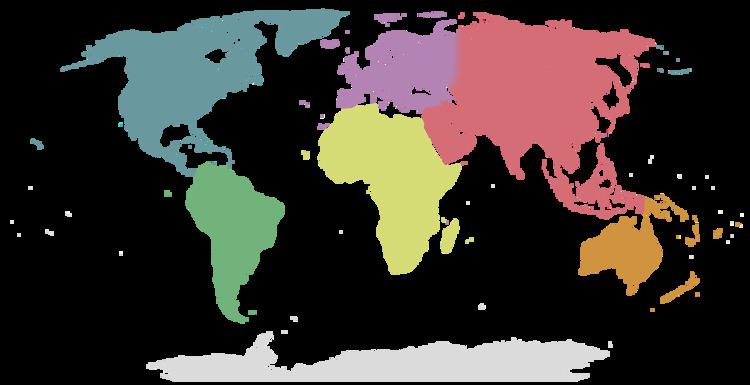 | ||
The influence of Hinduism in Kenya began in early 1st millennium AD when there was trade between East Africa and Indian subcontinent. Archaeological evidence of small Hindu settlements have been found mainly in Zanzibar and coastal parts of Kenya, Swahili coast, Zimbabwe and Madagascar. Many words in Swahili language have their etymological roots in Indian languages associated with Hinduism.
Contents
- Demographics
- Introduction
- Hindus in Kenya
- List of a few Hindu Temples in Kenya
- Hindu Council of Kenya
- Hare Krishna ISKCON in Kenya
- Hindu Swayamsevak Sangh HSS RSS in Kenya
- References
Pew Research Center estimates there were 60,000 Hindus in Kenya in 2010, or less than 0.25% of the total Kenyan population. Other estimates place the number higher. There were over 200,000 Hindus in Kenya (still less than 1% of total population, mostly from Gujarat, Odisha and northwestern states of India), before it gained independence from British colonial rule in 1963. During political conflicts that followed, many Hindus emigrated from Kenya to Europe (UK mainly) and other commonwealth nations.
Unlike north and northeast African countries which do not allow construction of Hindu temples or open practice of Hinduism, Kenya allows religious freedom to practice Hinduism; several of Kenyan cities have a number of Hindu temples from different schools of Hinduism. The Hindu temples in Kenya are mostly of north and west Indian architectural style.
Demographics
According to the 2009 Census, there are a total of 53,393 Hindus in Kenya.
Introduction
Hinduism in Kenya mainly comes from coastal trade routes between primarily between Gujarat, Marwar and Odisha in India and East Africa.
The origin of the Kenyan Gujarati dates back to the late 1800s (early 1900s), when British colonialists brought laborers from India to build the Uganda–Kenya railway. Many of the laborers, rather than travel back to the Indian subcontinent, simply settled in Kenya, and slowly brought with them a host of hopefuls willing to start afresh.
Hindus in Kenya
One percent of Kenyan population practiced Hinduism as reported by IRF. This is in contrast to 0.14% reported in the Kenyan Census of 2009.
Today, the Gujarati community in Kenya is estimated at over ninety thousand, and is dispersed throughout the country. Despite varying degrees of acculturation, most have retained their strong Gujarati ties.
HSS (RSS) and ISKCON are the main contributors to the society in large by organizing public events and introducing many welfare programs such as the food relief programs and other services which has attracted many Kenyans and created a good reputation of the Hindu community at large.
Pushtimarg Vaishnav Sangh and Brahma Kumaris are also active in Kenya.
List of a few Hindu Temples in Kenya
There are approximately more than 40 Hindu Temples in Kenya.
A few well known are:
Hindu Council of Kenya
Hindu Council of Kenya is an umbrella body of Hindus in Kenya. The Council is recognized by the Government. Until a few years back, the Hindus were described in the voter’s register as 'Non-Muslims'. Due to the efforts of the Council, they are now described as 'Hindus'. The Council has been busy in preparing syllabus and books for Hindu religious education.
Hare Krishna - ISKCON in Kenya
The International Society for Krishna Consciousness (ISKCON) also known as Gaudiya Vaishnavism or "The Hare Krishna Movement" has successfully established 4 Temples in Kenya till date. With all efforts and hard work, they preach the glories of Lord Sri Radha Krishna, love of godhead (Bhakti Yoga), the message of Bhagavad-Gītā as It Is and also other Vedic scriptures. Also organize wonderful festivals such as Krishna Janmashtami, Radhastami, Rama Navami, Gaura-purnima, Narasimha Chaturdashi and many.
The most famous is the Jagannath Ratha-Yatra also known as the "Festival of Chariots" which attracts over 5000 Kenyans to dance and sing the holy names of Lord Sri Jagannath (The Lord of the Universe).
Hare Krishna Food for Life is the world's largest vegetarian non-profit food relief organization. Its efforts span the globe, with projects occupying over 108 countries, including Kenya. Volunteers in Kenya provide up to 20,000 free meals daily. Food For Life does not only tackle one form of hunger but reaches out to all in need, including; the homeless and disadvantaged children.
Food for Life project is a modern-day revival of the ancient Vedic culture of hospitality with its belief in the equality of all beings.
The popular nickname of "Hare Krishnas" for Krishna Devotees comes from the vedic mantra that devotees sing aloud (Kirtan) or Chant (Japa) on Tulsi-mala. This mantra, known also as the Maha Mantra comes from the ancient Vedic Scriptures.
The Maha Mantra:
Always Chant and be Happy!
Hindu Swayamsevak Sangh (HSS) - RSS in Kenya
HSS is part of Rashtriya Swayamsevak Sangh (RSS). HSS is known to have started in 14th November 1947 in Nairobi, and since then it has developed and has its centers in different cities like Mombasa, Nakuru, Eldoret, Kisumu and Meru.
Its main aims have been known to preserve, practice and promote Hindu ideals and values and encourages in maintaining Hindu cultural identity in harmony with the prevailing diversity in the world.
Since its main moto is to "Serve the Society" (Seva) it carries out many humanitarian activities such as Feeding the needy, provides Wheel Chairs and Artificial Limbs to amputees, organizes medical camps for free medical services and for blood donation, and is mainly famous for its Tree Planting Program.
